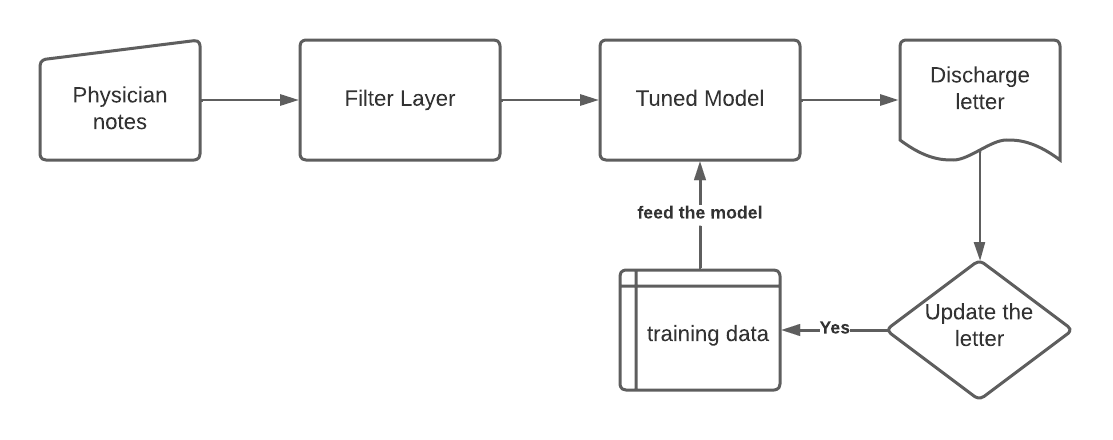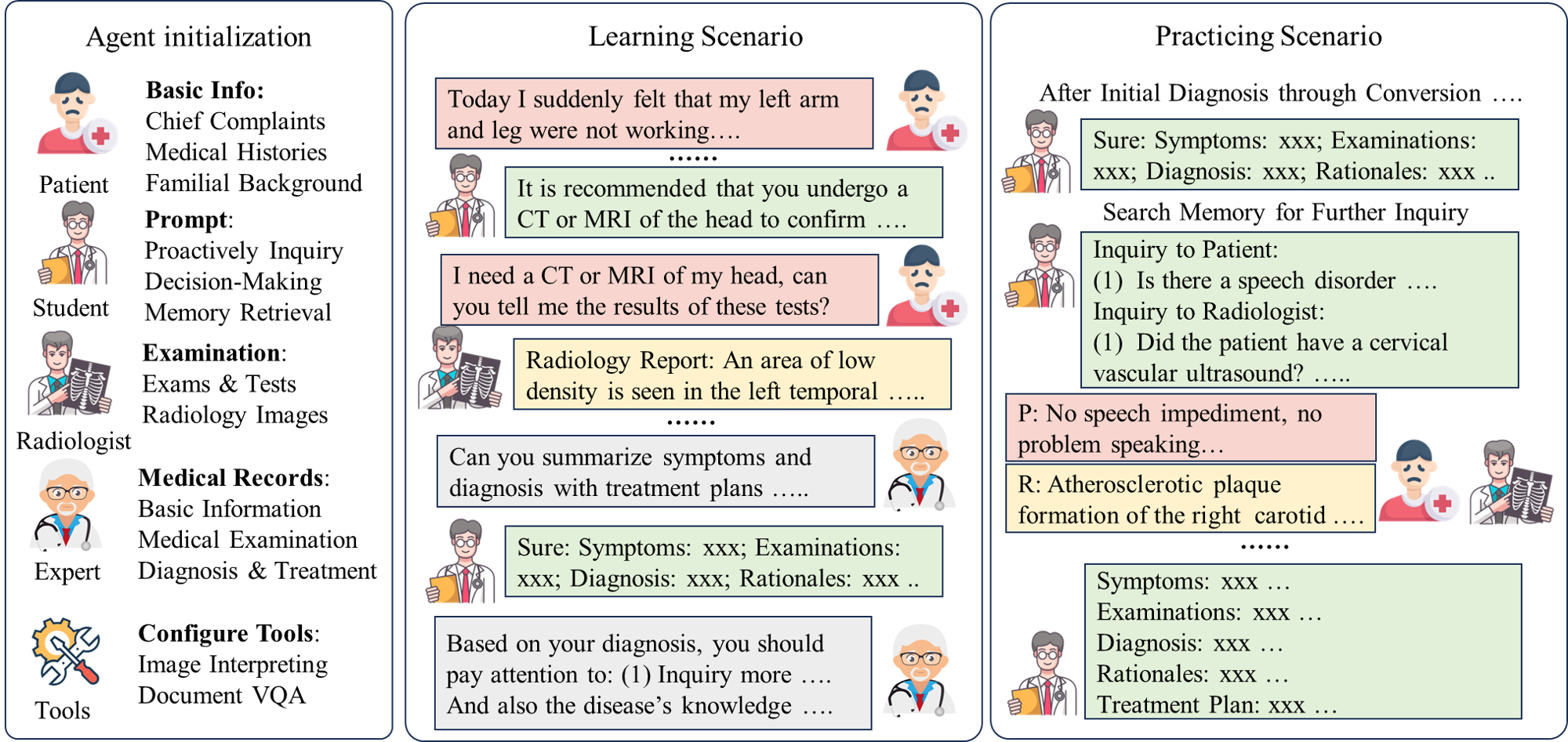ED-Copilot: Reduce Emergency Department Wait Time with Language Model Diagnostic Assistance

0

Sign in to get full access
Overview
- This paper introduces "ED-Copilot," a system that uses language models to assist medical professionals in the Emergency Department (ED) and reduce patient wait times.
- The system aims to provide real-time diagnostic support and help streamline the triage and treatment process.
- The researchers developed a new benchmark, MIMIC-ED-Assist, to evaluate the performance of language models in this context.
- Key innovations include leveraging large language models for clinical decision support and introducing a new benchmark for evaluating such systems in the ED setting.
Plain English Explanation
The ED-Copilot paper presents a system that uses advanced language models to help medical professionals work more efficiently in the Emergency Department (ED). The goal is to reduce the time patients have to wait for treatment.
The system works by providing real-time diagnostic assistance to doctors and nurses. When a patient arrives at the ED, the language model can quickly analyze their symptoms and medical history to suggest potential diagnoses and treatment options. This can help the medical staff make faster and more accurate decisions, which should lead to shorter wait times for patients.
To evaluate the performance of this system, the researchers created a new benchmark called MIMIC-ED-Assist. This benchmark uses data from real ED visits to test how well language models can assist in the triage and treatment process.
Overall, the ED-Copilot system represents an innovative way to apply the power of large language models to improve the efficiency and quality of care in emergency medical settings. By automating certain diagnostic tasks, it has the potential to reduce wait times and help medical professionals focus on the most pressing cases.
Technical Explanation
The ED-Copilot system leverages advanced language models to provide real-time diagnostic support and streamline the triage and treatment process in the Emergency Department (ED). The researchers developed a new benchmark, MIMIC-ED-Assist, to evaluate the performance of language models in this clinical context.
MIMIC-ED-Assist is based on the MIMIC-III dataset, which contains de-identified medical records from real ED visits. The benchmark includes tasks such as symptom assessment, differential diagnosis generation, and treatment recommendation. By testing language models on this dataset, the researchers can assess their ability to assist medical professionals in making accurate and timely decisions.
The key innovation of the ED-Copilot system is its use of large language models for clinical decision support. These models are trained on vast amounts of medical literature and patient data, allowing them to understand and reason about complex medical concepts. When integrated into the ED workflow, the language model can analyze a patient's symptoms and history, suggest potential diagnoses, and recommend appropriate treatment options.
Critical Analysis
The ED-Copilot system represents a promising approach to improving the efficiency and quality of care in emergency medical settings. By automating certain diagnostic tasks, it has the potential to reduce wait times and help medical professionals focus on the most pressing cases.
However, the researchers acknowledge several limitations and areas for further research. First, the MIMIC-ED-Assist benchmark, while a valuable tool, may not fully capture the complexity and diversity of real-world ED scenarios. Additionally, the performance of language models in this context may be influenced by factors such as the availability and quality of training data, as well as the integration of the system into existing clinical workflows.
Further research is needed to address these challenges and ensure the safe and effective deployment of ED-Copilot in the clinical setting. Rigorous testing, user feedback, and ongoing monitoring will be crucial to ensure that the system provides reliable and trustworthy support to medical professionals.
Conclusion
The ED-Copilot system represents a novel approach to improving the efficiency and quality of care in emergency medical settings. By leveraging advanced language models to provide real-time diagnostic support, the system has the potential to reduce patient wait times and help medical professionals make more informed decisions.
The development of the MIMIC-ED-Assist benchmark is a significant contribution, as it provides a standardized way to evaluate the performance of such systems in a clinical context. As the field of AI-powered clinical decision support continues to evolve, the insights and lessons learned from this research will be invaluable in shaping the future of emergency medicine and patient care.
This summary was produced with help from an AI and may contain inaccuracies - check out the links to read the original source documents!
Related Papers


0
ED-Copilot: Reduce Emergency Department Wait Time with Language Model Diagnostic Assistance
Liwen Sun, Abhineet Agarwal, Aaron Kornblith, Bin Yu, Chenyan Xiong
In the emergency department (ED), patients undergo triage and multiple laboratory tests before diagnosis. This time-consuming process causes ED crowding which impacts patient mortality, medical errors, staff burnout, etc. This work proposes (time) cost-effective diagnostic assistance that leverages artificial intelligence systems to help ED clinicians make efficient and accurate diagnoses. In collaboration with ED clinicians, we use public patient data to curate MIMIC-ED-Assist, a benchmark for AI systems to suggest laboratory tests that minimize wait time while accurately predicting critical outcomes such as death. With MIMIC-ED-Assist, we develop ED-Copilot which sequentially suggests patient-specific laboratory tests and makes diagnostic predictions. ED-Copilot employs a pre-trained bio-medical language model to encode patient information and uses reinforcement learning to minimize ED wait time and maximize prediction accuracy. On MIMIC-ED-Assist, ED-Copilot improves prediction accuracy over baselines while halving average wait time from four hours to two hours. ED-Copilot can also effectively personalize treatment recommendations based on patient severity, further highlighting its potential as a diagnostic assistant. Since MIMIC-ED-Assist is a retrospective benchmark, ED-Copilot is restricted to recommend only observed tests. We show ED-Copilot achieves competitive performance without this restriction as the maximum allowed time increases. Our code is available at https://github.com/cxcscmu/ED-Copilot.
Read more5/29/2024


0
AI Managed Emergency Documentation with a Pretrained Model
David Menzies, Sean Kirwan, Ahmad Albarqawi
This study investigates the use of a large language model system to improve efficiency and quality in emergency department (ED) discharge letter writing. Time constraints and infrastructural deficits make compliance with current discharge letter targets difficult. We explored potential efficiencies from an artificial intelligence software in the generation of ED discharge letters and the attitudes of doctors toward this technology. The evaluated system leverages advanced techniques to fine-tune a model to generate discharge summaries from short-hand inputs, including voice, text, and electronic health record data. Nineteen physicians with emergency medicine experience evaluated the system text and voice-to-text interfaces against manual typing. The results showed significant time savings with MedWrite LLM interfaces compared to manual methods.
Read more8/20/2024


0
MEDCO: Medical Education Copilots Based on A Multi-Agent Framework
Hao Wei, Jianing Qiu, Haibao Yu, Wu Yuan
Large language models (LLMs) have had a significant impact on diverse research domains, including medicine and healthcare. However, the potential of LLMs as copilots in medical education remains underexplored. Current AI-assisted educational tools are limited by their solitary learning approach and inability to simulate the multi-disciplinary and interactive nature of actual medical training. To address these limitations, we propose MEDCO (Medical EDucation COpilots), a novel multi-agent-based copilot system specially developed to emulate real-world medical training environments. MEDCO incorporates three primary agents: an agentic patient, an expert doctor, and a radiologist, facilitating a multi-modal and interactive learning environment. Our framework emphasizes the learning of proficient question-asking skills, multi-disciplinary collaboration, and peer discussions between students. Our experiments show that simulated virtual students who underwent training with MEDCO not only achieved substantial performance enhancements comparable to those of advanced models, but also demonstrated human-like learning behaviors and improvements, coupled with an increase in the number of learning samples. This work contributes to medical education by introducing a copilot that implements an interactive and collaborative learning approach. It also provides valuable insights into the effectiveness of AI-integrated training paradigms.
Read more8/23/2024


0
MDS-ED: Multimodal Decision Support in the Emergency Department -- a Benchmark Dataset for Diagnoses and Deterioration Prediction in Emergency Medicine
Juan Miguel Lopez Alcaraz, Hjalmar Bouma, Nils Strodthoff
Background: Benchmarking medical decision support algorithms often struggles due to limited access to datasets, narrow prediction tasks, and restricted input modalities. These limitations affect their clinical relevance and performance in high-stakes areas like emergency care, complicating replication, validation, and improvement of benchmarks. Methods: We introduce a dataset based on MIMIC-IV, benchmarking protocol, and initial results for evaluating multimodal decision support in the emergency department (ED). We use diverse data modalities from the first 1.5 hours of patient arrival, including demographics, biometrics, vital signs, lab values, and electrocardiogram waveforms. We analyze 1443 clinical labels across two contexts: predicting diagnoses with ICD-10 codes and forecasting patient deterioration. Results: Our multimodal diagnostic model achieves an AUROC score over 0.8 in a statistically significant manner for 357 out of 1428 conditions, including cardiac issues like myocardial infarction and non-cardiac conditions such as renal disease and diabetes. The deterioration model scores above 0.8 in a statistically significant manner for 13 out of 15 targets, including critical events like cardiac arrest and mechanical ventilation, ICU admission as well as short- and long-term mortality. Incorporating raw waveform data significantly improves model performance, which represents one of the first robust demonstrations of this effect. Conclusions: This study highlights the uniqueness of our dataset, which encompasses a wide range of clinical tasks and utilizes a comprehensive set of features collected early during the emergency after arriving at the ED. The strong performance, as evidenced by high AUROC scores across diagnostic and deterioration targets, underscores the potential of our approach to revolutionize decision-making in acute and emergency medicine.
Read more7/29/2024